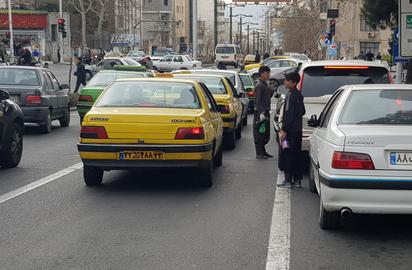Seven Iranians have been arrested for their involvement in an international money-laundering operation in Canada that siphoned drug money from Mexico through countries across the Middle East, North America and Asia and then back into the smuggling business in Latin America.
On Tuesday February 12, the Royal Canadian Mounted Police reported that it had uncovered an international money-laundering network and had arrested 17 people, including the seven Iranians. The network was run by organized-crime cells in Montreal and Toronto, which were overseen by two Iranians, Mohammad Jaber, 51, who oversaw the Montreal cell, and Nader Gramian, 56, who ran the Toronto one. The group had used an informal value transfer system with connections in Iran, Lebanon, the United Arab Emirates, the United States and China. The funds were then redirected to countries with large illegal drug operations, including Colombia and Mexico.
Drug cartels from Mexico and Colombia sent money to Montreal in cash in bags or suitcases filled with between $250,000 and $500,000; the transactions took place in parking lots and other locations. Gramian and accomplices would then remit the money through various channels to Iran, the United Arab Emirates, Lebanon, China and the United States. Dubai was the hub for a major part of the transactions. In Iran, the cost of synthetic drugs was deposited into the bank accounts of the Chinese drug producers.
So how was the money transferred from Iran to Canada? How did sanctions and the cutting off of direct monetary transactions between Iran and other countries allow for the formation of one of the biggest money-laundering organizations in the world? The operation appealed to criminals across the globe— from big drug cartels in Central America and terrorist groups to corrupt Iranian criminals — because it offered them all a good opportunity to wipe out any trace of their criminal activities.
Instant Money Transfer
There are almost no restrictions when it comes to converting rials to Canadian or US dollars in Canada. IranWire investigations show that, as long as a person knows the right money changer in Iran, it is possible to transfer amounts above $500,000 by depositing it into their account. Some money changers will accept a property deed in Tehran and then transfer its value in dollars to their customer — in cash or with a bank check, all at once or in installments to reduce the risk of the transfer to the bank.
If the recipient owns a business or asset in Canada, such as real estate, then he or she will not encounter much trouble depositing this money into his or her bank account. But otherwise, it is not very difficult to convince a Canadian bank to accept funds by providing them with various documents — whether genuine or forged — such as the deed for the sale of a property in Iran or the bequest of a close relative. In that way, money that could not be transferred officially and legally simply enters the Canadian banking system and the legal money networks.
From this stage on, money laundering becomes more difficult because once the money reaches the Canadian banking system it is easily traceable, meaning that it is easy to pinpoint where it is and for what purpose it is spent. What remains unknown is the origins and the channel that was used to get it from Iran to the other side of the world.
This is not to say that all the money that arrives in Canada from Iran is dirty. But what is not clear is what happens along the way and the where the money originates from, money that has often become immediately accessible to Iranians through their bank accounts and by using their bank cards. When looking further into the matter and talking to those involved, almost everybody answers in generalities: The money is taken to the UAE or Turkey in the form of dirhams and liras, changed into dollars in those countries, and then usually remitted to another country — often Kuwait, until recently — and then transferred legally and transparently to any country in the world, including Canada.
But, considering the limited volume of Turkish liras and UAE dirhams in Iran, this method cannot possibly account for the transfer of billions of dollars a year. So how else could this money be made available?
Transferring Dollars Out of Iran
To transfer dollars out of Iran there are three legal methods, and then there is money laundering.
Considering that the transfer of dollars out of Iran is impossible as a result of sanctions, the first legal way is to deal in dollars emerging from Iranian exports. Some Iranian exporters prefer to convert their dollars to rials outside Iran so that they can benefit from free market prices instead of artificially low prices set by the government. But the volume handled by such a method is necessarily limited, for the simple reason that the major part of export dollars are used to pay for imports before they get to Iran. By comparing the $47 billion volume of Iranian exports in the Iranian calendar year of 1396 (March 21, 2017 to March 20, 2018) to the Iranian imports of $54 billion in the same year, it is possible to see that not only none of the export dollars remains, but also that the government must then find a way to pay for the difference.
Transferring cash out of Iran, officially or otherwise, is possible. Travelers are limited to what they can carry out in terms of amounts, and this transaction is traceable. And there are no reliable statistics regarding the volume of illegal dollars that are smuggled to neighboring countries. Altogether, it is not likely that a lot of money is transferred out of Iran via smuggled banknotes.
The third legal way of transferring money seems the most logical: Conducting transactions with the financial institutions of neighboring countries in their own currencies — mostly liras, dirhams and sometimes dinars. Nevertheless, this method cannot satisfy the need for billions of dollars outside Iran. Most of the Iranian governmental and non-governmental reserves in Iran are in dollars, and even at the height of sanctions, nobody, not Iranians or foreigners, are willing to make deals in any currency other than in US dollars.
The fourth method of getting money out — money laundering —has to account for some levels of transfer, although these levels are not known, and have not been known for decades.
The Crooked Method: Money Laundering
The discovery of the money laundering network in Canada shows that there is also a wide detour for converting Iranian rials to dollars.
As it turns out, the dollars that the unwitting clients of Nader Gramian have received for years do not arrive in Canada from Iran, but instead from drug cartels in Mexico and Canada. Gramian accepted rials from his Iranian clients and, in exchange, handed over money that arrived in Montreal in bags containing hundreds of thousands of dollars. In Iran, most people involved in the money exchange business are not concerned about where the dollars come from and, furthermore, the responsible agencies have no problems with money transfers, especially since that through using these transfers, no dollars actually leave Iran. The process comes to its conclusion through Iran’s commercial transactions with the UAE and China, and this is how the cash gets transferred from one side of the world to the other.
It is very likely that the majority of Gramian’s clients were small-time customers who wanted to convert just a few thousand dollars. But in recent years the number of such customers in Canada has grown exponentially and big money laundering networks see them as golden opportunities.
To satisfy their everyday needs, people across the world can transfer small or even large amounts of money in a transparent and hassle-free way — except for Iranians. Thanks to the sanctions and the opacity of the Iranian banking system, they have no other option but to resort to unofficial money markets, markets that have made Iran and Iranians ready to embrace money laundering. Willingly or not, many people are routinely exposed to dirty money and, in addition to all the other problems that they have to deal with being Iranian citizens in western countries, they have to shoulder the serious charge of money laundering as well.
For years now, Canadians have been taking serious measures against money laundering and launderers. The country’s traditionally easygoing laws for investment, especially in real estate, have made Canada one the most attractive destinations for money smugglers. So the recent action by Canadian police could signal a turning point in the fight against money laundering in Canada. If so, then Iranians in Canada and the unofficial network for transferring money through Iranian money changers will face difficult days ahead.
Related Coverage:
Sanctions and Spats Expel Iranian Money Changers from Dubai, February 1, 2019
Would Shaving Off Zeros from the National Currency Help the Iranian Economy?, January 15, 2019
Could a 20% Salary Increase Help State Employees?, December 5, 2018
Iran Rushing Toward 30 Percent Inflation, November 27, 2018
Zarif Admits Money Laundering is Rife in Iran, November 14, 2018
, October 30, 2018
The Humanitarian Cost of Sanctions on Parsian Bank, October 23, 2018
Iran Finally Signs Convention for the Suppression of the Financing of Terrorism, October 8, 2018
How did Countries Deal with Iran During Previous Sanctions?, August 7, 2018
Money Laundering and Terrorism: Rouhani vs the Revolutionary Guards, September 7, 2016
visit the accountability section
In this section of Iran Wire, you can contact the officials and launch your campaign for various problems

























comments